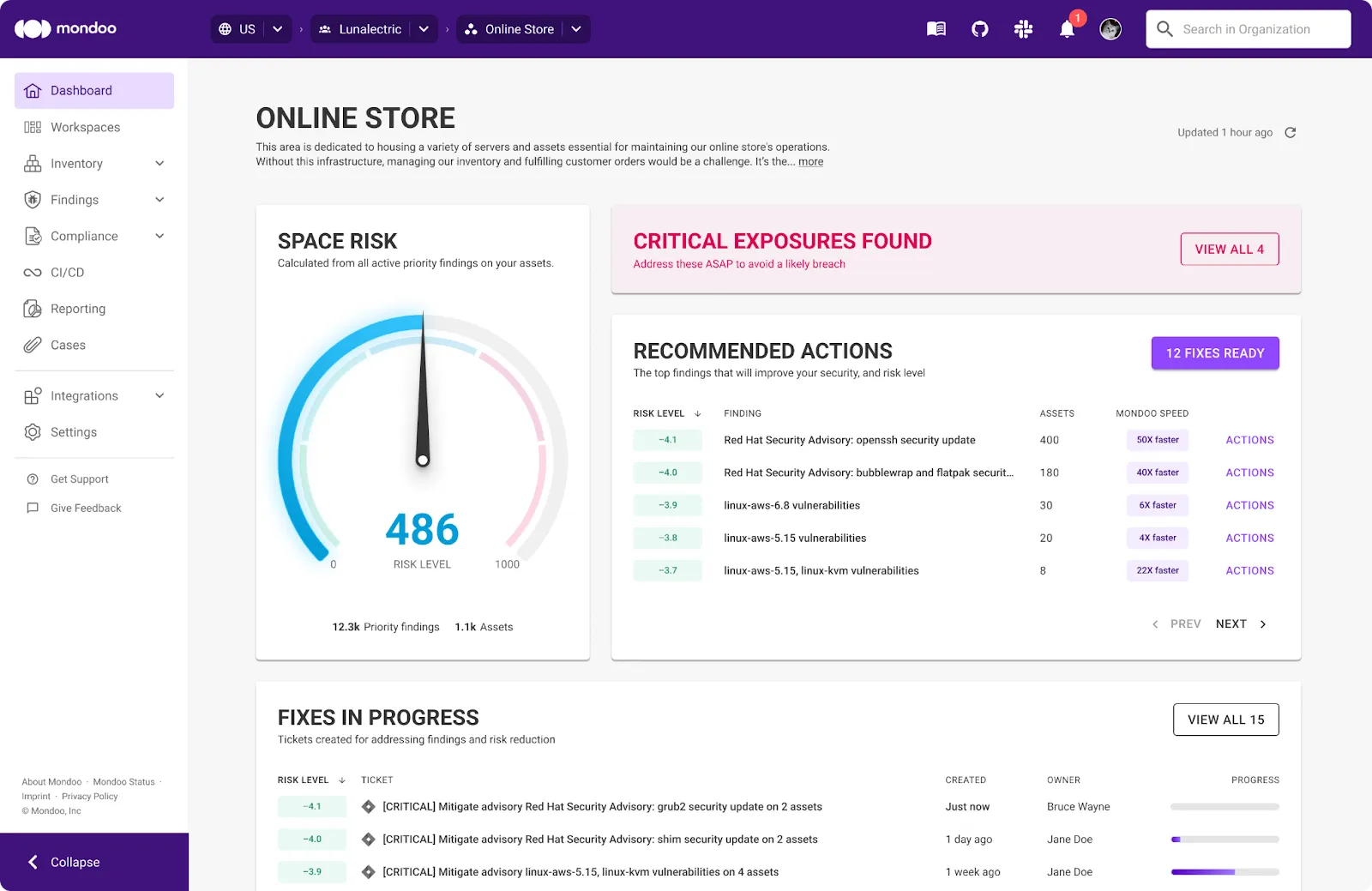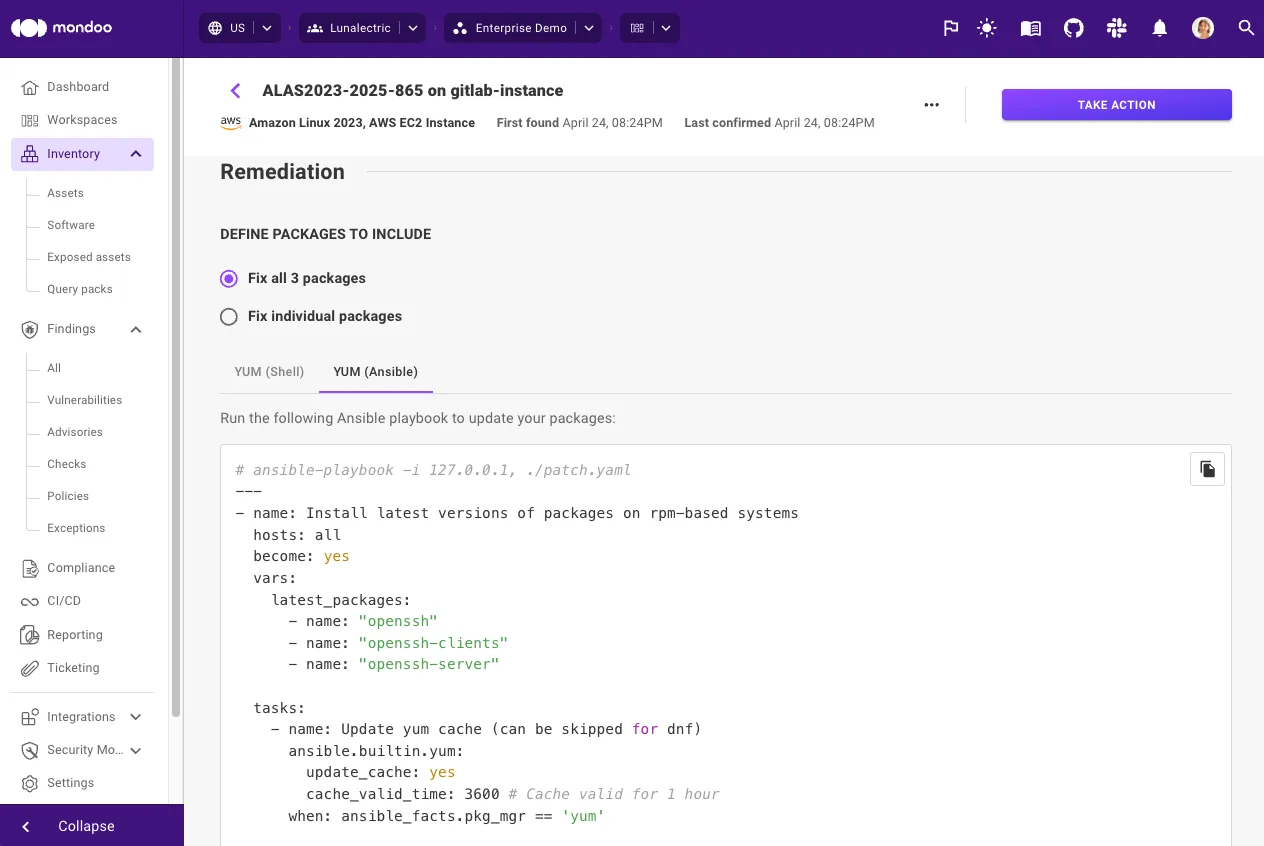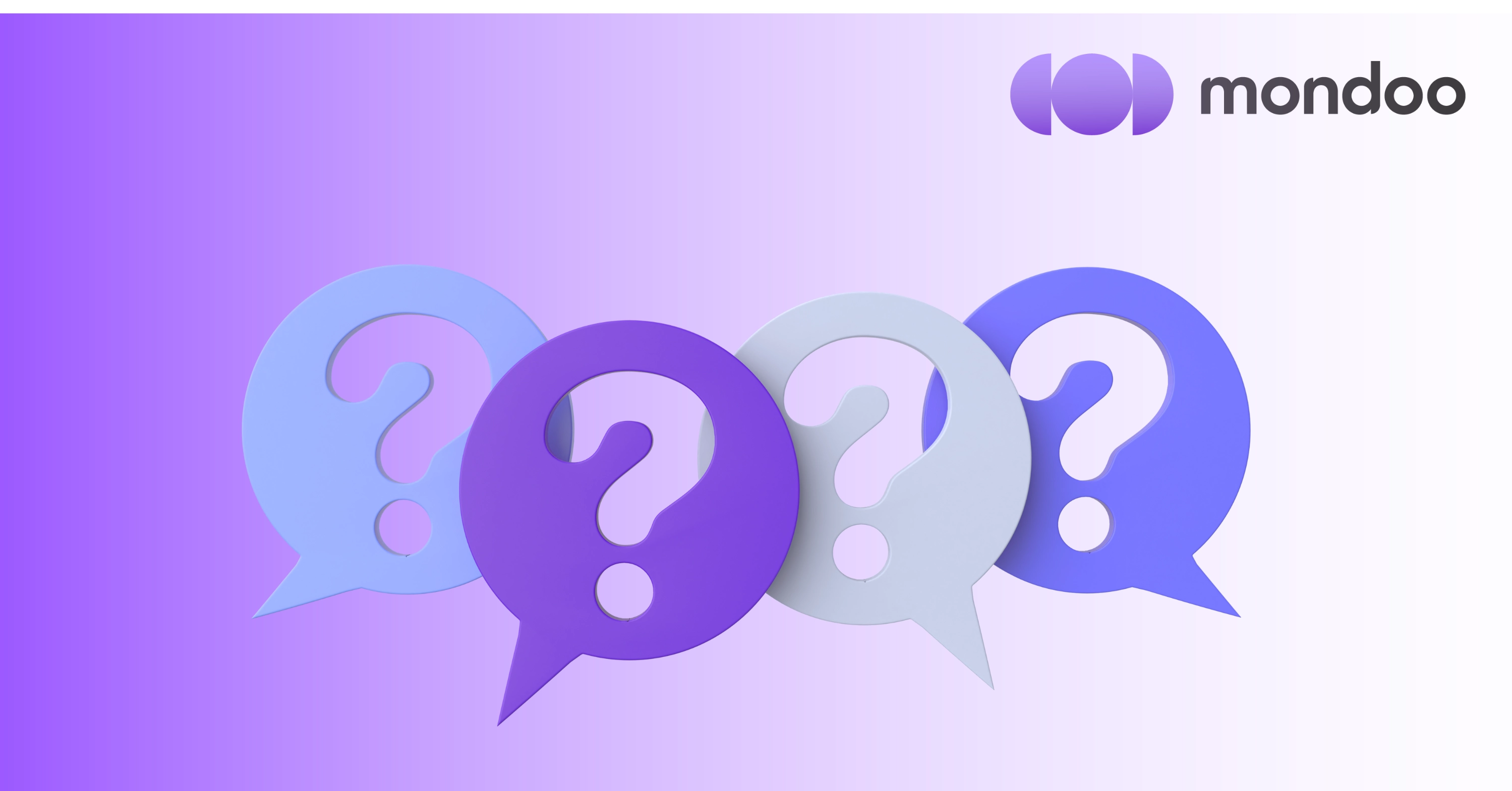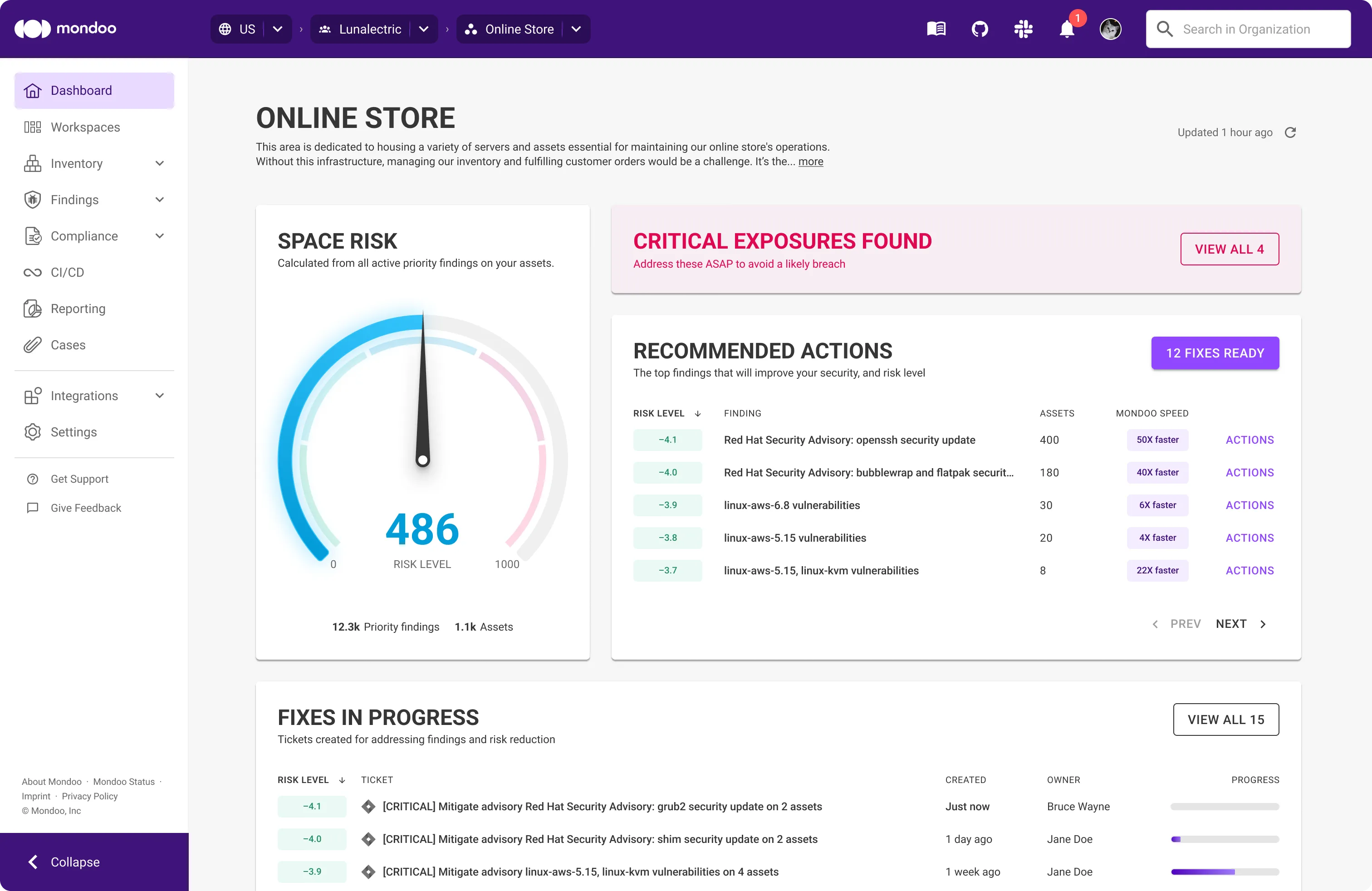In today's rapidly evolving digital world, cyber threats are becoming more sophisticated, making security vulnerabilities a critical concern for businesses, organizations, and individuals. A security vulnerability is a flaw, weakness, or oversight in a system, application, network, or process that attackers can exploit to compromise the confidentiality, integrity, or availability of data or resources. Understanding and managing these vulnerabilities is essential to safeguarding sensitive information and maintaining operational security. This guide explores what security vulnerabilities are, their impact, and how to manage them effectively with tools like Mondoo.
What are security vulnerabilities?
A security vulnerability is any gap in security measures that could allow unauthorized access, data breaches, or malicious actions. These weaknesses can arise from software bugs, misconfigurations, or outdated systems, leaving systems exposed to cyberattacks. Vulnerabilities are cataloged in the Common Vulnerabilities and Exposures (CVE) database, with severity ranked on a 0-10 scale using the Common Vulnerability Scoring System (CVSS), based on exploitability, impact, and complexity.
Key characteristics of security vulnerabilities
- Types: Software bugs, misconfigurations, weak passwords, outdated systems, or design flaws.
- Examples: Buffer overflows, SQL injection, cross-site scripting (XSS), unpatched software, or exposed APIs.
- Impact: Risks include data theft, system downtime, malware infections, or unauthorized system control.
- Detection: Identified through vulnerability scanning, penetration testing, or code reviews.
- Mitigation: Addressed with patches, updates, configuration changes, or enhanced security controls.
Why security vulnerabilities matter
Unaddressed vulnerabilities can have devastating consequences. For instance, the 2017 Equifax breach, caused by an unpatched Apache Struts vulnerability, exposed the personal data of 147 million individuals. Similarly, the WannaCry ransomware exploited a Windows vulnerability, impacting hundreds of thousands of systems worldwide. These incidents underscore the risks of:
- Financial Losses: Costs from recovery, legal fees, and fines.
- Reputational Damage: Loss of customer trust and brand credibility.
- Regulatory Penalties: Fines under regulations like GDPR or HIPAA.
- Operational Risks: Downtime or compromised critical systems, especially in sectors like healthcare or finance.
Proactively managing vulnerabilities is key to minimizing these risks and maintaining robust cybersecurity.
Best practices for managing security vulnerabilities
Effective vulnerability management requires a strategic, proactive approach:
- Discovery: Use automated scanning tools to identify vulnerabilities across your infrastructure.
- Prioritization: Focus on high-severity vulnerabilities based on exploit potential and business impact.
- Remediation: Apply patches, adjust configurations, or deploy compensating controls to mitigate risks.
- Continuous Monitoring: Regularly track new vulnerabilities and verify remediation efforts.
Integrating vulnerability management into DevSecOps pipelines ensures issues are caught early, reducing the attack surface and enhancing security throughout the development lifecycle.
How Mondoo simplifies security vulnerability management
Mondoo identifies security vulnerabilities across diverse infrastructures, including on-premises, cloud, and SaaS services. Mondoo’s agentic security model enables businesses to prioritize vulnerabilities based on their specific needs, ensuring efficient resource allocation.

Mondoo seamlessly integrates with IT systems like Jira, ServiceNow, GitHub, and GitLab, streamlining workflows and embedding security into existing processes. Additionally, Mondoo provides detailed remediation steps with ready-to-use Bash, PowerShell, Ansible, and Terraform scripts, empowering teams to address vulnerabilities quickly and effectively.

Stay ahead of cyber threats with Agentic Vulnerability Management
Security vulnerabilities are an inevitable part of the digital landscape, but their risks can be mitigated with the right strategies and tools. By understanding vulnerabilities, prioritizing risks, and leveraging solutions like Mondoo, organizations can transform vulnerability management into a strategic advantage, ensuring robust protection in an ever-threatened digital world.
Ready to secure your systems? Explore how Mondoo can help you identify, prioritize, and remediate vulnerabilities across your infrastructure today. Schedule a demo.
See Agentic Vulnerability Management in Action
FAQs
Was ist SEO?
SEO oder Suchmaschinenoptimierung ist die Praxis, Ihre Website zu optimieren, um ihre Sichtbarkeit in Suchmaschinen wie Google zu verbessern. Dazu gehören die Verwendung bestimmter Keywords, die Erstellung hochwertiger Inhalte und die Sicherstellung, dass Ihre Website benutzerfreundlich ist. Ein CMS kann bei der Suchmaschinenoptimierung helfen, indem es Tools zur Verwaltung von Metatags, Sitemaps und anderen wichtigen Elementen bereitstellt, die zu besseren Platzierungen in Suchmaschinen beitragen.
So aktualisieren Sie Ihr CMS
Die Aktualisierung Ihres CMS ist entscheidend für die Aufrechterhaltung von Sicherheit und Leistung. Die meisten CMS-Plattformen bieten Benachrichtigungen über verfügbare Updates. Um zu aktualisieren, melden Sie sich in Ihrem Admin-Panel an, navigieren Sie zum Abschnitt Updates und folgen Sie den Anweisungen, um die neueste Version zu installieren. Es ist wichtig, dass Sie Ihre Website sichern, bevor Sie Updates durchführen, um Datenverlust zu vermeiden, falls während des Vorgangs Probleme auftreten.
Warum sollten Sie sich für ein CMS entscheiden?
Die Wahl eines CMS bietet zahlreiche Vorteile für das Website-Management. Es vereinfacht den Prozess der Erstellung und Bearbeitung von Inhalten und ermöglicht es auch technisch nicht versierten Benutzern, eine Website effektiv zu pflegen. Ein CMS bietet auch integrierte Tools für SEO, Analyse und Benutzerverwaltung, mit denen Sie die Gesamtleistung Ihrer Website verbessern können. Darüber hinaus verfügen viele CMS-Plattformen über große Communities und eine umfangreiche Dokumentation, was es einfacher macht, Unterstützung und Ressourcen zu finden.
Was ist ein Plugin?
Ein Plugin ist eine Software, die einem vorhandenen Computerprogramm bestimmte Merkmale oder Funktionen hinzufügt. Im Kontext eines CMS können Plugins die Funktionen der Plattform erweitern und es Benutzern ermöglichen, neue Funktionen wie SEO-Tools, Integration sozialer Medien und erweiterte Sicherheitsmaßnahmen hinzuzufügen. Die Installation von Plugins ist in der Regel unkompliziert und kann direkt über das CMS-Dashboard verwaltet werden.
Wie benutzt man ein CMS
Ein Content Management System (CMS) ermöglicht es Benutzern, Inhalte auf einer Website zu erstellen, zu verwalten und zu ändern, ohne dass spezielle technische Kenntnisse erforderlich sind. Um ein CMS zu verwenden, melden Sie sich zunächst im Admin-Panel an. Von dort aus können Sie neue Seiten erstellen, Beiträge hinzufügen und Mediendateien verwalten. Die meisten CMS-Plattformen bieten eine benutzerfreundliche Oberfläche mit Drag-and-Drop-Funktionen, mit denen Sie Ihre Website ganz einfach gestalten können. Darüber hinaus können Sie Ihre Website mithilfe von Designs und Plugins anpassen, um die Funktionalität zu verbessern.
You might also like









